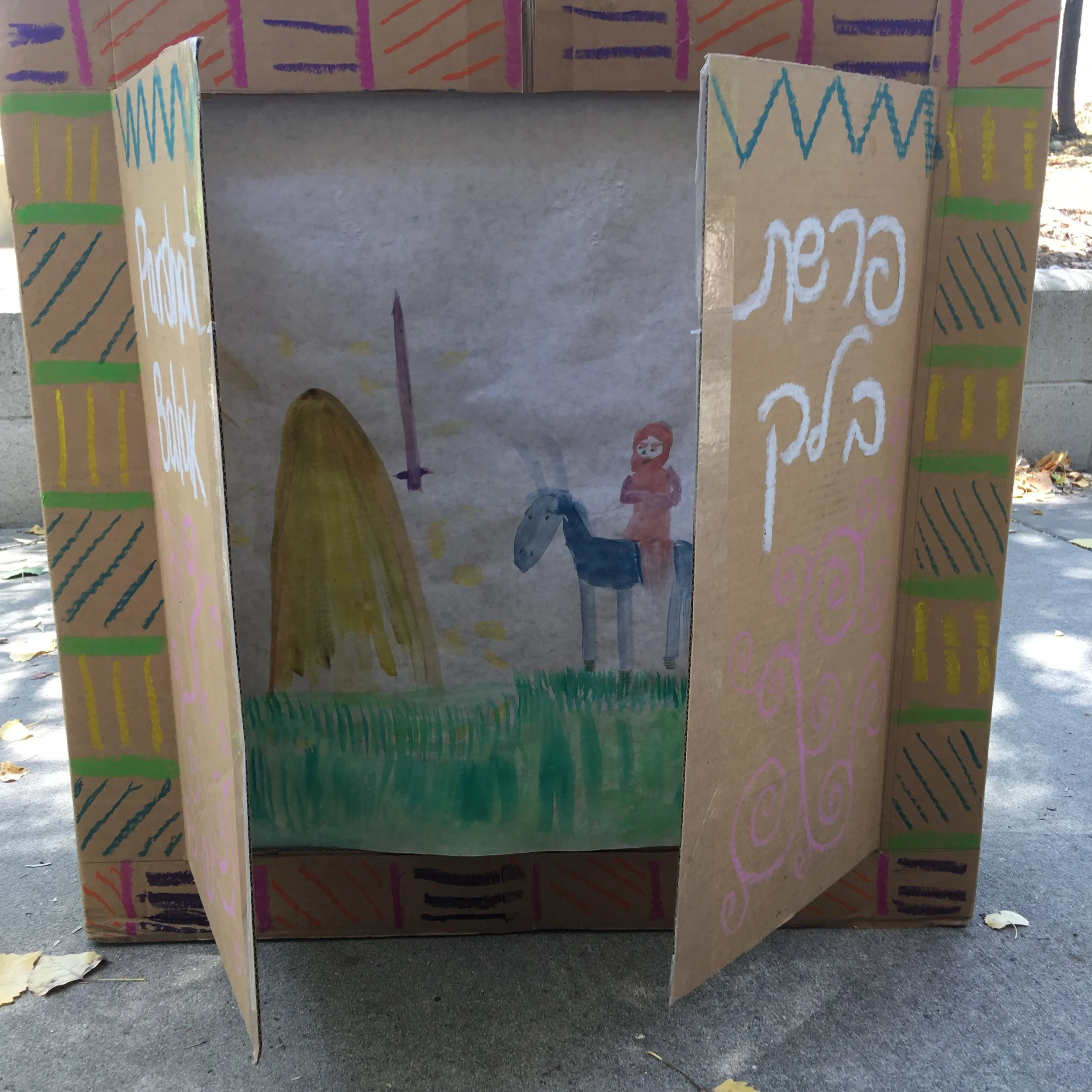Have you ever heard of a crankie? I was first introduced to the concept of these awesome moving storytelling contraptions (actually not unlike a Sefardi Torah scroll!) by Risa Lenore, of Jelly Jam Time, and was delighted when a few of my summer colleagues at the Brandeis Collegiate Institute (BCI) proposed trying our hand at making our own version.
Every Shabbat at BCI includes a creative rendering of the traditional weekly Torah service, in which one portion (of the 52 total) of the Torah is read in Synagogue. We figured we’d experiment with bringing the Torah reading - that week was the portion of Balak - into the form of a creative performance, accompanied by our crankie!
After creating the initial structure of the crankie, we worked with a small group of participants to distill the story into discreet chunks or phrases, that we then transferred on to cardboard cards. (The basic story: Balam - man who speaks to God - is summoned by Balak - Moabite king - to go curse the Jewish people in the wilderness. After Balam’s donkey verbally clues him in to the presence of a threatening angel in his path, a chastened Balam continues on his way, and ends up blessing the Jews instead of cursing them, including one of the most well known phrases - Mah Tovu Ohalecha Yaakov - How goodly are your tents o’ Jacob. But unfortunately the Jewish people brought a plague upon themselves by acting in immoral ways. Oof.)
Outside of the dining hall, we rolled out two long rolls of white butcher paper, along the course of which we placed watercolor paints and brushes, as well as the Torah portion cards that detailed the story in 14 parts. We invited everyone in the BCI community - participants, staff, staff kids, visitors - to take a few minutes before or after a meal to sit and contribute their painted interpretation of a section of the Torah portion.
Once the two scrolls were nicely filled out, we attached them to the crankie. After a bit of practice, we were ready for showtime during the Shabbat Torah service! One of the things we puzzled about was how to include the last section (about the Jewish people bringing a plague on themselves/ourselves) without it being a huge bummer, but authentically representing the whole Torah portion. In the end, we concluded with this thought (contributed by Michelle Brint), and a request:
Perhaps blessings are always effective, but maybe significantly less so when they are from afar, when they don’t take into account your specific needs, your specific struggles. So we should take the opportunity to bless when we are close, when we can see in greater detail the needs and struggles of each other. So we asked people to turn to the person next to them, and say one or a few things that they felt they needed blessing around, and the person listening would offer a blessing – from close – to them.
How about you? Have you ever received a blessing that was particularly meaningful to you? Do you have any sort of blessing practice in your life?



















